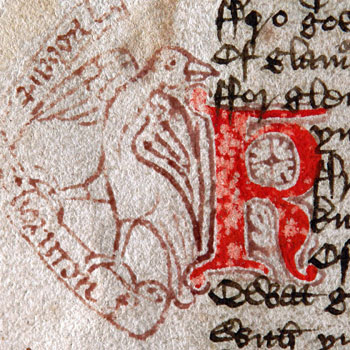Siege of Jerusalem
General Information
Plot Summary

Having crucified Christ, the Jews are given forty years’ grace before God exacts his revenge. After this time, Titus of Gascony finds himself disfigured by cancer of the mouth while his father Vespasian has leprosy and a hive of wasps in his nose. When a Jewish ship bound for Rome is driven ashore in Gascony, Titus asks its captain, Nathan, to cure their afflictions. Nathan describes Christ’s ministry, miracles and death, then tells Titus about Veronica’s veil which is imprinted with Christ’s image and heals all believers. Titus rages about the Passion and is immediately healed. He is baptised and, vowing to avenge Christ’s death, accompanies Nathan to Rome. There his father also professes his faith in Christ and, on the advice of St Peter, sends for Veronica and her veil. The cloth is processed through the town, and glows miraculously as Peter uses it to heal Vespasian. Meanwhile, Nathan informs Nero that the Jews will no longer pay him tribute. Enraged, the Emperor sends Titus and Vespasian to Judea to extract his payment.
Their ships arrive in Jaffa and as they wreak havoc, the Jews flee to Jerusalem. The Romans pitch their tents around the walls and after their envoys are humiliated, both sides prepare for battle. The Jews issue from the city riding on camels and fortified elephants: one carries a tabernacle in which Caiaphas and his clerks sing Psalms. The battle is violent, but the Romans force the Jews back into the city and begin their siege in earnest, erecting battle engines and brutally executing the captive Caiaphas. The Jews refuse Vespasian’s command to surrender and one of their leaders, Josephus, attempts to trick the Romans into leaving. He is foiled, however, and the siege continues.
Meanwhile in Rome, the wicked Nero commits suicide. A number of ineffective successors also die, until the Senate sends for Vespasian. Leaving Titus in charge of the siege, he returns to Rome to be crowned. Titus falls ill with joy at his father’s election, but is healed by Josephus. Hostilities soon resume, and Jerusalem is struck by famine: one woman eats her own child and the elderly are refused food. When Titus rejects their request for terms, the Jews tunnel under the walls and ambush him, but are driven back into the city again. As their conditions worsen, Titus finally offers the Jews peace but is refused. Those who escape are granted refuge, but are killed by soldiers who discover that they have eaten the city’s treasure.
At last, after two years, Titus mounts a final attack. As his men surround the city, the Jews pray for peace as he breaches the walls. Strange portents occur as he orders his men to raze the temple and sells the Jews thirty for a penny. Pilate is imprisoned and kills himself, while Titus returns triumphantly to Rome.
From: Ralph Hanna and David Lawton, The Siege of Jerusalem. EETS o.s. 320. Oxford: Oxford University Press, 2003.
Manuscript: Oxford, Bodleian Library MS Laud Misc. 656.
Manuscripts
Click a title below to search for all romances in that manuscript.